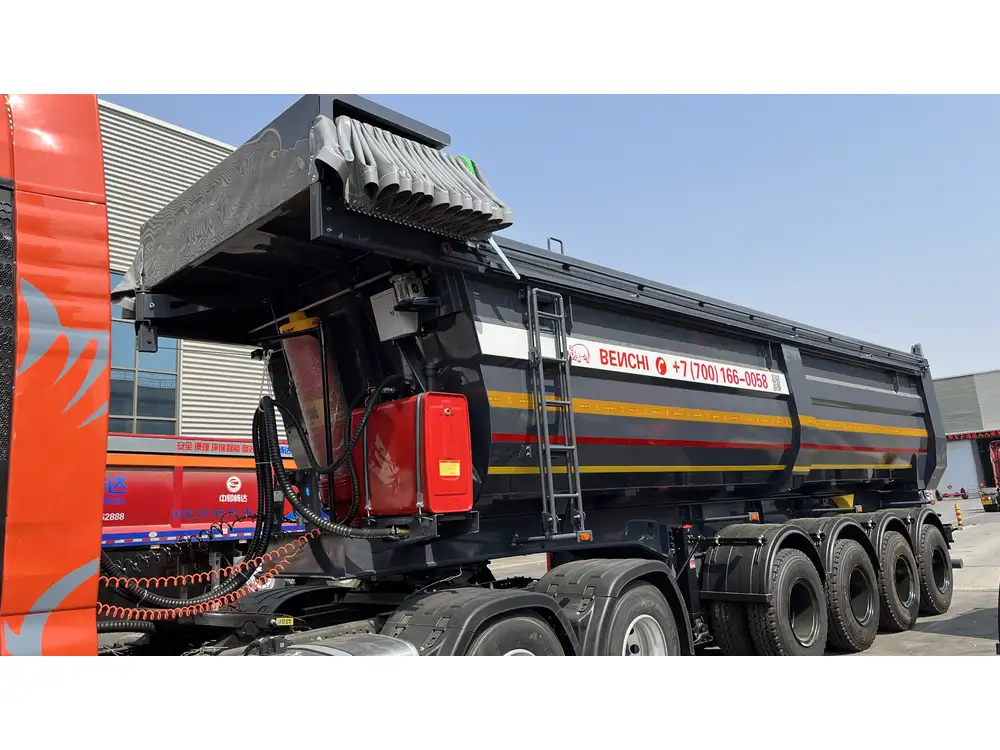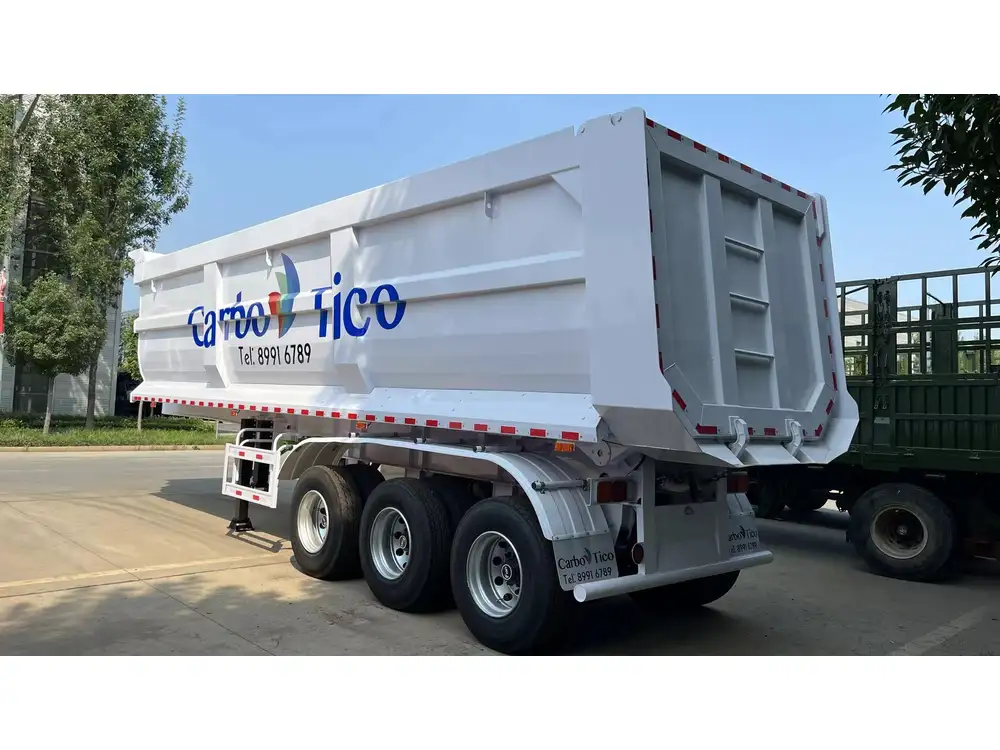When it comes to transportation logistics and freight shipping, understanding the capacity of a semi-trailer is crucial for efficient operations. One common question that arises in the logistics industry is, “How many cubic meters fit in a semi-trailer?” This question not only helps businesses plan their shipments effectively but also influences cost management. In this article, we will delve into the dimensions, types of trailers, calculations, and implications of cubic meter capacity in semi-trailers.
What is a Semi-Trailer?
A semi-trailer is a type of trailer that cannot stand alone; it requires a tractor unit to be transported. Unlike full trailers that have wheels and can be towed on their own, semi-trailers are designed with a specific structural configuration that allows them to be hitched to the back of a truck. This design maximizes hauling capacity while maintaining stability and facilitating easier loading and unloading.
Semi-Trailer Types
To address the question of cubic meter capacity accurately, it’s essential to consider the different types of semi-trailers available in the market:
| Type of Semi-Trailer | Description | Typical Dimensions |
|---|---|---|
| Flatbed Trailer | Open structure allowing versatile loads | Length: 12.2-13.7m; Width: 2.44m; Height: up to 1.5m |
| Dry Van Trailer | Enclosed trailer for cargo protection | Length: 12.2-13.7m; Width: 2.44m; Height: ~2.75-3m |
| Reefer Trailer | Refrigerated trailer for perishable goods | Length: 12.2-13.7m; Width: 2.44m; Height: ~2.7-2.75m |
| Tank Trailer | Used for liquids, features a cylindrical design | Length: 12.2-13.7m; Diameter: 2.4-2.7m |
| Step Deck Trailer | Lower deck for transporting taller loads | Length: 12.2-13.7m; Width: 2.44m; Height: ~1.5m |

Dimensions and Volume Calculation
The standard dry van trailer is the most commonly used type in freight transport and is characterized by its enclosed nature, which provides security and weather protection for the cargo.
- Typical Dimensions:
- Length: 13.6 meters
- Width: 2.5 meters
- Height: 2.7 meters (internal)
To calculate the internal volume, we utilize the formula for volume ( V ):
[ V = \text{length} \times \text{width} \times \text{height} ]Substituting the standard values:
[ V = 13.6 \, m \times 2.5 \, m \times 2.7 \, m = 91.8 \, m^3 ]Cargo Capacity in Cubic Meters
Understanding the cubic meter capacity of various semi-trailer types is crucial for effective cargo planning. Here’s a breakdown of volumes for different semi-trailer types:
| Semi-Trailer Type | Cubic Meter Capacity | Typical Use Cases |
|---|---|---|
| Flatbed Trailer | Up to 50 m³ | Construction materials, oversized loads |
| Dry Van Trailer | 91.8 m³ | General freight, retail goods |
| Reefer Trailer | 85 – 90 m³ | Perishable food items, pharmaceuticals |
| Tank Trailer | 25 – 40 m³ | Liquid goods such as chemicals or fuel |
| Step Deck Trailer | Up to 50 m³ | Transporting tall or oversized cargo |
Variances in Capacity
It’s important to note that the cubic meter capacity of a trailer may vary based on several factors:
Internal Dimensions: Each manufacturer may have slightly differing measurements based on design and structural elements.
Load Configuration: The way cargo is arranged (loose boxes vs. pallets) can affect how efficiently space is utilized.
Weight Restrictions: Despite having the volume to carry a certain amount, weight restrictions may limit how much cargo can actually be loaded, as semi-trailers must also abide by local and federal weight regulations.
Type of Cargo: Different types of cargo may require distinct packing configurations, affecting how much can be loaded.

Benefits of Understanding Cubic Meters
Understanding how many cubic meters can fit in a semi-trailer opens a myriad of advantages. Here’s a closer look:
1. Cost-Effective Loading
Accurately estimating the volume ensures that you maximize space utilization, meaning fewer trips and reduced fuel costs. As logistics providers face tighter margins, optimizing load capacity is paramount.
2. Improved Scheduling
When businesses can foresee how much cargo fits into a semi-trailer, they can better plan delivery schedules, reducing the risk of delays that often stem from underutilized or overloaded loads.

3. Enhanced Customer Service
Knowing the cargo capacity allows businesses to meet customer demands more effectively. Clients appreciate transparency in shipping times and costs, which can ultimately boost client loyalty and satisfaction.
4. Regulatory Compliance
Awareness of both volume and weight capacities can help companies adhere to transportation regulations, mitigating the risk of fines or delays due to non-compliance.
Factors Influencing Volume Calculation
While the basic formula for volume calculation lays a solid foundation, consider these additional factors that could influence the final capacity estimation:

A. Palletization
When using pallets, the dimensions can significantly affect how much cargo can fit inside. Standard pallet sizes (e.g., European Pallet: 1200mm x 800mm) will influence how many can be stacked, necessitating different calculations based on height and stacking restrictions.
B. Cargo Type
The type of cargo influences configuration. Fragile items require more space and protective packing, while raw materials might be able to be more tightly packed.
C. Driver Expertise
Drivers experienced with cargo loading techniques can help maximize the effective use of space. Improper loading can lead not only to inefficiencies but also to safety hazards.

D. Weight Distribution
Ensuring the proper distribution of weight within the trailer is crucial for safe driving. Overloading or uneven loads can lead to accidents and additional strain on the trailer’s axles.
Conclusion
In conclusion, knowing how many cubic meters fit in a semi-trailer is not merely a matter of curiosity but a vital aspect of effective logistics management. This knowledge empowers businesses to optimize their loading strategies, reduce costs, enhance customer satisfaction, and ensure compliance with transportation regulations. By understanding the intricacies of trailer types, cargo configurations, and the factors influencing capacity estimations, companies can make informed decisions that drive success in their freight operations.
As the transportation industry evolves, staying abreast of these details will be crucial for businesses aiming to excel in a competitive market landscape. With efficiency and customer service at the core of logistics, ensuring that every cubic meter is utilized effectively will remain paramount as we continue to navigate the ever-complex dynamics of freight transport.



